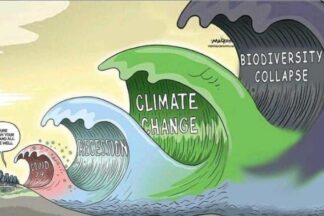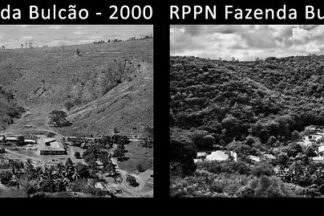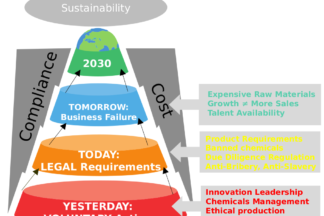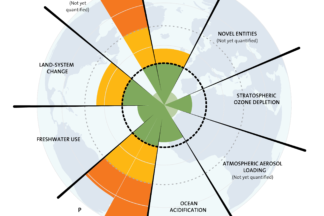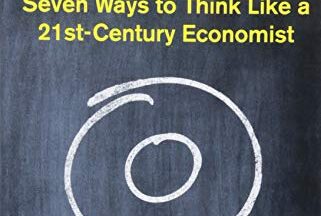In the last post I wrote about one of the most historic inter-governmental landmark decisions: At the ‘Biodiversity’ COP (COP15) 200 countries had agreed on 4 Goals and 23 Targets.
It goes without saying though that the interesting piece is the enforcement and implementation mechanisms of the mentioned agreement.
Hence, the focus of this article is: How exactly – if at all – will the goals and progress measures reached in December 2022 be enforced and tracked?
In time for Christmas, one of the most historic inter-governmental landmark decisions hit the headlines: The 'Biodiversity' COP (COP15) had actually achieved 'something'. 200 countries had agreed on 4 Goals and 23 Targets. Some of those are a bit more concrete than others, the headline goes roughly like this: “By 2030: Protect 30% of Earth’s lands, oceans, coastal areas, inland waters; Reduce by $500 billion annual harmful government subsidies; Cut food waste in half.” A closer look at precisely those 23 Targets and the specificity of the measures they contain.
Pricing the ton of carbon is a key matter – more so as an increasing number of companies aim at publicly claiming carbon neutrality. Carbon hence has a price – and this raises the much discussed question: What is a fair (or better: ‘correct’) price for carbon?
In this post I present a glimpse of some of the challenges and realities related to the topic.
It leaves us with the question: What went wrong in the current system that fundamentally asks us to choose between having to monetarily price natural and societal resources, and a fair, equitable access to these resources specifically for hard hit communities?
The question alone should not be even asked.
And yet it seems that’s what we’re left with given the current time and age.
Measuring Biodiversity, in terms of baseline (status quo), progress, and deliverable targets, is not a simple thing. Collateral damages are a serious risk.At the same time though, some companies use outcomes of tools, which where never intended to deal at all with biodiversity, as proxy vehicles. This of course raises the question: Where are we with tools, programmes, and measurement systems for biodiversity? Hereafter a look across what I found to be having (some) teeth - also in comparison to the more popular climate change topic. These are: TNFD, SBTN, as well as two management tools that might be helpful, FFFBB and BIA.
Ask: If you are aware of others initatives 'with teeth' as of of writing (November 2021): do let me know and I’d be happy to list them also. Thank you!
While the relevance and criticality of COP26 is hammered home in the global media, the news reporting on COP15, as an effort possibly and reality more important than its Scottish climate conference peer, was rather subdued and unspectacular.
Let’s therefore get the most context-relevant questions straight out of the way: What is COP15? And why are there two COPs? And what has biodiversity to do with it?
Regenerative' is really a re-packaging of traditional agro-ecological approaches, with an added notion of leaving the land better than it was found.
And yet - because lack of knowledge runs deep in companies, such lack is compensated by prescribing procedures rather than to focus on outcomes. It is a bit of a deja-vu indeed ...
Right now everyone, everything seems to talk about wanting to be come ‘carbon neutral’.
Don’t get me wrong: The goal itself – getting to a net zero carbon balance at the very least, and all that on nothing longer than a 2040 trajectory – is a must for every business.
But.
After Circularity and Regenerative, we’re seemingly right onto the next term in the game of buzzword bingo: Net Zero.
Net Zero should be every where indeed.
But not as a mere wave to ride in order to catch the next press release headline.
Reducing humanity’s footprint on this planet is a journey of decisions.
Some of them tough, some of them very clear. And some of them – let’s just say: with very limited available data.
The journey we’re on, is the proverbial Designer’s Paradox. More scientifically speaking of course, we are faced with the ever lasting conundrum of Regrettable Substitutions.
So: Is there a best possible AND least bad option (combined) at this very moment?
Carbon – together with biodiversity – is one of THE most critical dimensions among the Planetary Boundaries. Because the already existing overshoot is putting our civilisation at risk. So far nothing new under the sun.
The energy sector is the by far most impactful sector: directly and indirectly our carbon footprint depends on how they fuel our civilisation.
The big elephant in the room is of course: How well are badly do energy companies perform right now in terms of their carbon footprint? And: Do they have at the least commitments to work on a Paris Agreement trajectory? I look into these questions. Spoiler Alert: The results are pretty much in line with expectations. Yet: among the innovators, not everyone does perform as well as they probably should ...
Carbon – together with biodiversity – is one of THE most critical dimensions among the Planetary Boundaries. Because the already existing overshoot is putting our civilisation at risk. So far nothing new under the sun. The big elephant in the room is of course: How do companies perform right now in terms of their carbon footprint? And: Do they have at the least commitments to work on a Paris Agreement trajectory? I answer these questions. Spoiler Alert: Some 'villains' are doing rather well. So well in fact that they are leading the pack.
‘System positive’. The latest term I came a cross in the finance world, and which intends to identify business that are particularly well set up to survive the tribulations to be expected in the decades to come. Immediately the cynic in me asks: Another addition to the sustainability bullshit bingo?
And yet: the 5 questions proposed for scrutinising companies are very sharp, very relevant and very insightful.
They only fall short of one: Will the company thrive within or even thanks to the Doughnut Boundaries?
Overconsumption or ‘simply’ consumption?
Fair resource use, or resource depletion?
Fair share, equal share or acquired share of resources?
Those are questions that pop up when the Planetary Boundaries are being discussed.
“Is Europe living within the limits of our planet?: An assessment of Europe's environmental footprints in relation to planetary boundaries”, published in April 2020 does exactly that: it evaluates and calculates the European performance for planetary boundaries by taking a consumption-based (footprint-based) perspective. This is turn is interesting as it relates environmental pressures to final demands for goods and services.
And the results are ... shall we say: a stark call to action.
Doughnut Economics = An economic system that respects the planetary boundaries as well as the societal attributes of welfare. To create an economic system that works for the humans and the environment around us.

